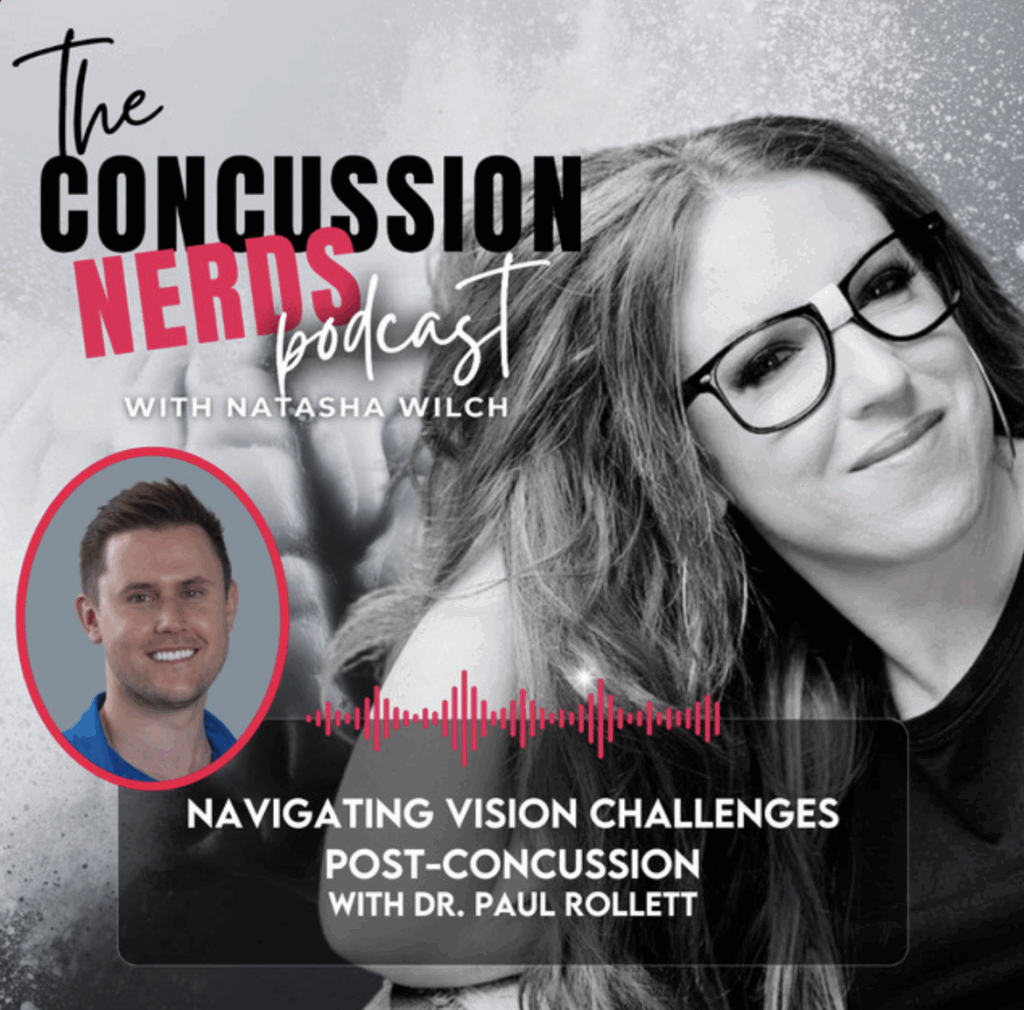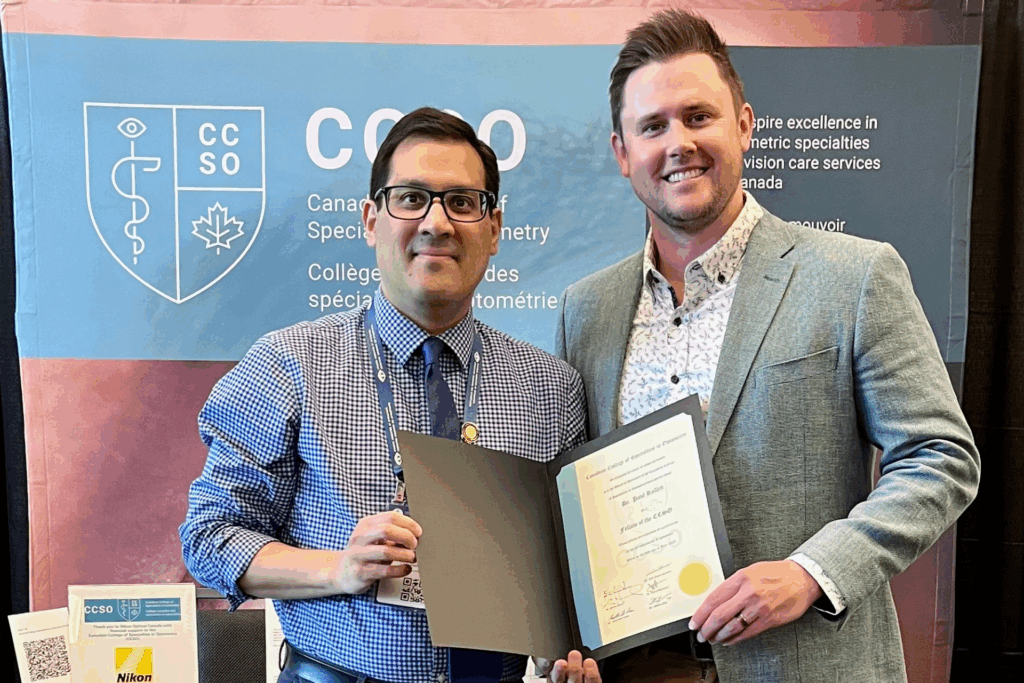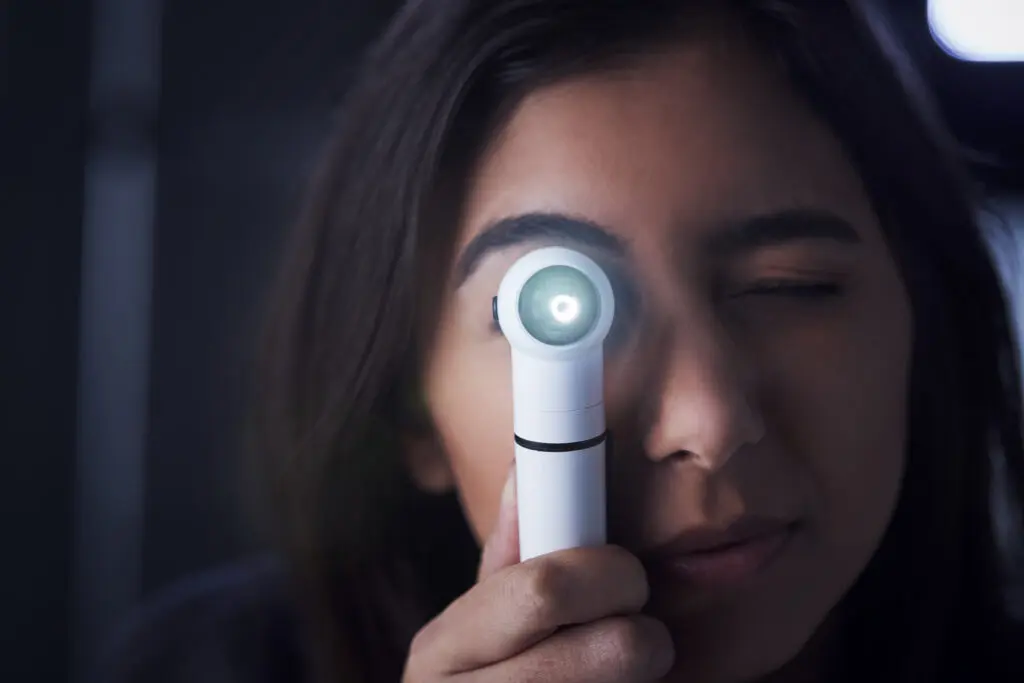Dr. Rollett was grateful to join physiotherapist and concussion expert Natasha Wilch, PT on the Concussion Nerds Podcast for a deep, practical, and truly collaborative conversation on vision, concussion rehab, and the art and science of therapeutic optics. Together they explored how neuro-optometry integrates with PT, how prism really works, and why a team-based approach transforms patient outcomes. We hope you enjoy the discussion!
Episode Summary:
In this episode of the Concussion Nerds podcast, host physiotherapist Natasha Wilch welcomes neuro-optometrist Dr. Paul Rollett from Okanagan Vision Therapy in British Columbia to talk about the role of vision in concussion rehabilitation. Paul shares his personal story of sustaining a concussion early in optometry school, struggling with unresolved visual issues for years, and how that experience pushed him toward a career focused on visual rehabilitation for concussion, whiplash, stroke, developmental vision problems in children, and athletes.
Natasha and Paul clarify what neuro-optometry actually is: a special interest that requires additional post-graduate training, fellowships, and often residencies beyond standard optometry school. They note that, while there still isn’t a perfectly uniform standard of care in concussion rehab – either in PT or optometry – the field is steadily moving toward more consistent, evidence-informed approaches. Individual clinicians may still develop their own assessment and treatment models, but these are increasingly guided by shared principles, mentorship, and emerging research. Paul explains that while testing may look similar across providers, the interpretation and lens prescribing can vary because prescribing is both a science and an art, involving decisions about strength, prism, focal point, and sometimes subtle tints tailored to a patient’s tasks and environment.
Understanding Neuro-Optometry and the Role of Prism
A large portion of the conversation focuses on prism, a hot topic in concussion care. Natasha describes the common narrative that “prism is bad” or something patients must “wean off,” and Paul gently reframes this. He explains that prism is present, in some form, in essentially every pair of glasses due to lens design and where the patient looks through the lens. He differentiates between directions of prism (e.g., base-out, base-down, base-in), talks about when certain types can be more “addictive” or must be monitored more closely, and emphasizes that most rehab clinicians are using very small “micro-prisms” in a careful, targeted way. For some patients, prism is a temporary training tool; for others, it’s more like orthotics for the eyes – an ongoing support that allows them to function comfortably without necessarily worsening their underlying alignment over time.
They then dig into the practical side of wearing new therapeutic lenses. Paul explains that these glasses are often prescribed later in the recovery timeline and are meant to change how the brain processes visual input – expanding peripheral awareness, supporting VOR (vestibulo-ocular reflex), and easing visual strain. Because this is a new demand on the nervous system, patients almost never go straight to full-time wear. Instead, he recommends starting with short periods (e.g., 30–45 minutes), gradually building up to about four hours per day over a few weeks, sometimes beginning in simpler indoor environments. Headache or mild symptom increase early on can be normal, but if lenses remain intolerable or make symptoms significantly worse, the prescription should be adjusted. Paul stresses that vision is dynamic, so glasses often need to be remade or fine-tuned as the visual system changes.
The Power of Team-Based Approaches in Patient Recovery
To support overwhelmed visual and autonomic systems, Paul also describes using optometric phototherapy – specialized tints and filters (often targeting shorter wavelengths around 450 nm) as short “bursts” of visual rest. He likens them to “Advil for your eyes,” noting how a few minutes with the right filter can quickly reduce visual and nervous system overload in many patients, especially those with frontal headaches or chronic light sensitivity.
Throughout, Natasha and Paul return to the theme of collaboration. They talk about the confusion patients feel when different specialists (e.g., neuro-ophthalmologists vs. neuro-optometrists) give conflicting advice about lenses, and Paul encourages patients to go back to their prescribing optometrist to discuss how they actually feel and function in the glasses. Both emphasize that true collaboration requires systems and two-way communication between professionals – PTs, OTs, chiros, and neuro-optometrists – rather than one-way referral chains. They close by sharing their excitement about upcoming joint teaching projects, encouraging cross-disciplinary learning (like attending each other’s conferences), and inviting listeners to learn more or contact Paul through the Okanagan Vision Therapy website, where additional educational resources and a documentary on vision in recovery are available.
Until next month,
Dr. Paul Rollett, OD, FOVDR, FCCSO




